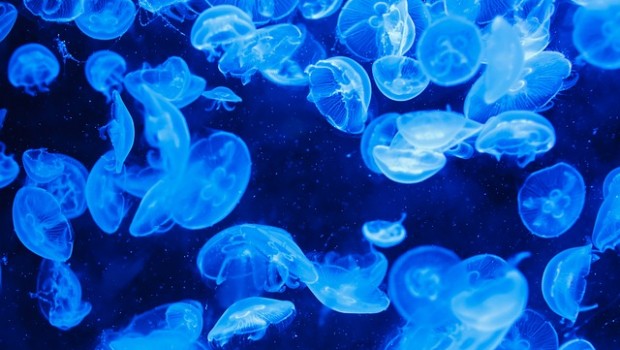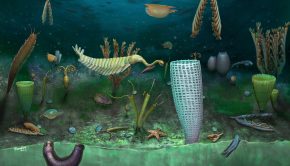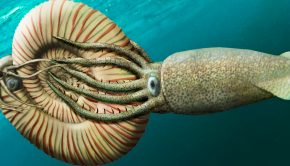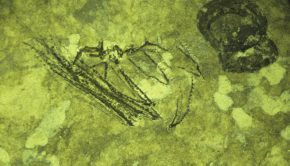Episode 29: Medusae
One of the longest-ranging and outwardly primitive-looking groups of animals on the planet are the Medusozoa. In consisting of around 95% water, it may be surprising to know that there is a fossil record of jellyfish, however how does one differentiate their fossils from other abiotic sedimentary structures when both look like sub-spherical blobs?
In this episode we speak to Graham Young, Curator of Geology and Paleontology at The Manitoba Museum, Canada, who addressed the identification of jellyfish fossils in a recent paper Young & Hagadorn 2010 The fossil record of cnidarian medusae.
Part one
Podcast: Download (Duration: 26:58 — 37.0MB)
Part two
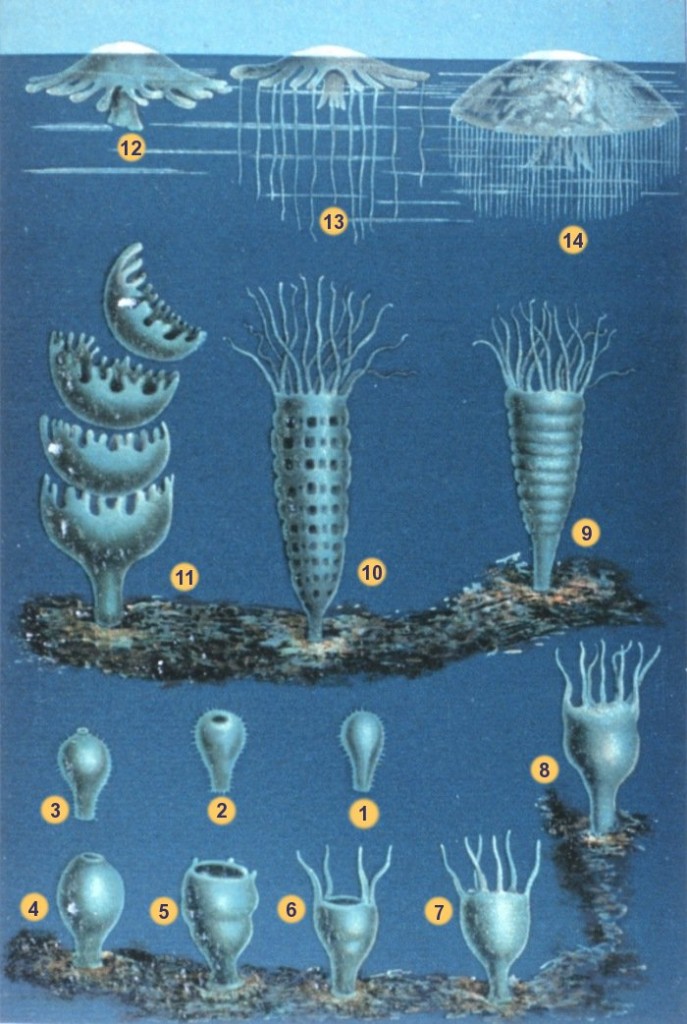
Jellyfish, as we would normally recognise them, are just the free-swimming stage in the life cycle of a medusozoan which even includes a sessile stage where they are fixed onto the sea floor. This diagram shows the life cycle of a true jellyfish (scyphozoan): 1-8 – planula attachment and metamorphosis to scyphistoma stage; 9-10 – scyphistoma strobilation; 11 – ephyra release; 12-14 – transformation of the ephyra into an adult medusa. The same life cycle can be seen in the video below.
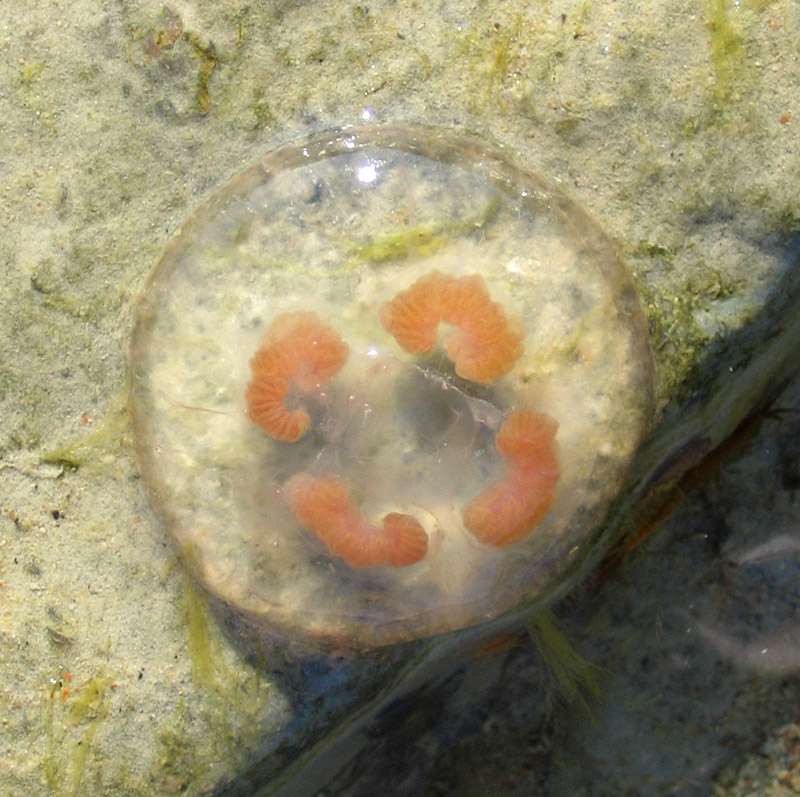
Dead jellyfish can be a common sight on beaches around the world. Here an Aurelia is washed up in Estonia. Image credit: Graham Young.
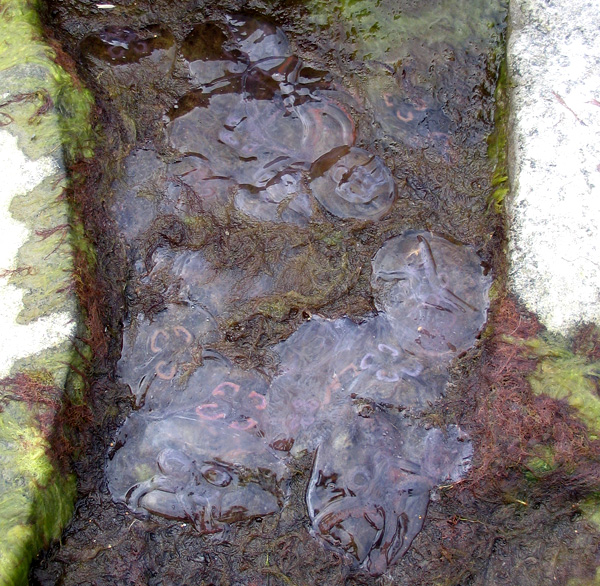
Often, dead jellyfish, carried by the currents, can be found deposited en masse. Aurelia, Estonia. Image credit: Graham Young.
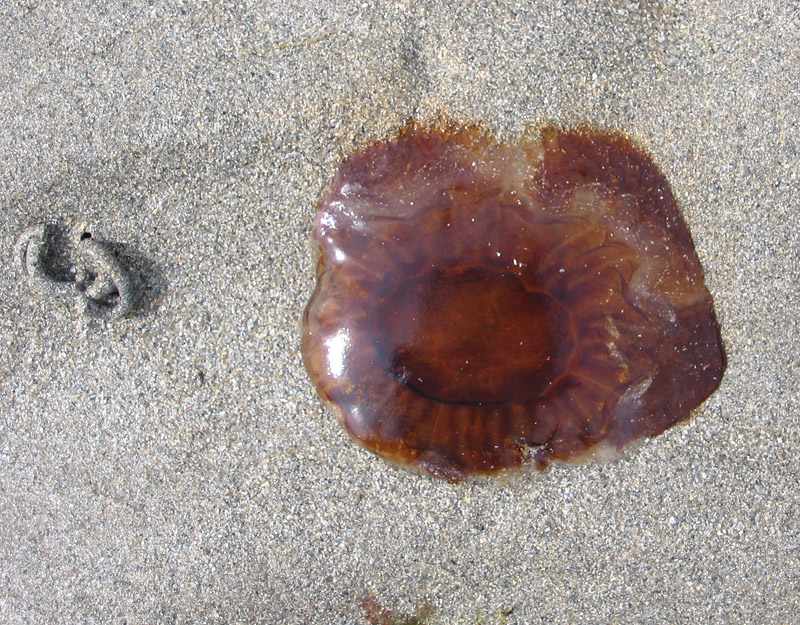
When deposited, jellyfish can’t retain their characteristic shapes and so resemble more of a sub-circular or irregular blob. Pictured a Cyanea capillata at Colonsay, Scotland. Image credit: Graham Young.
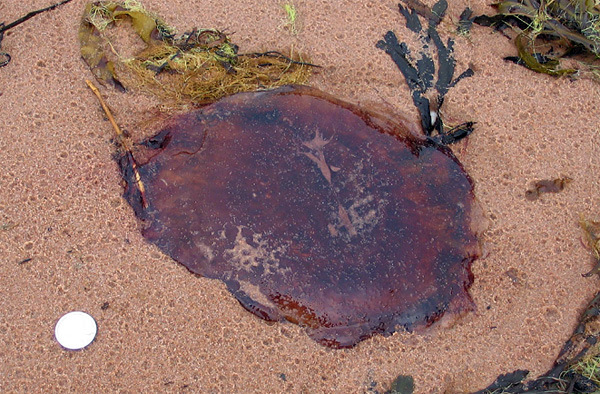
Given a relatively short period of time, a jellyfish will begin to decay. Sediment can become trapped within the body and the body laid to rest at an oblique angle, breaking up the outline of the body. Pictured dead C. capillata at Prince Edward Island, Canada. Image credit: Graham Young.
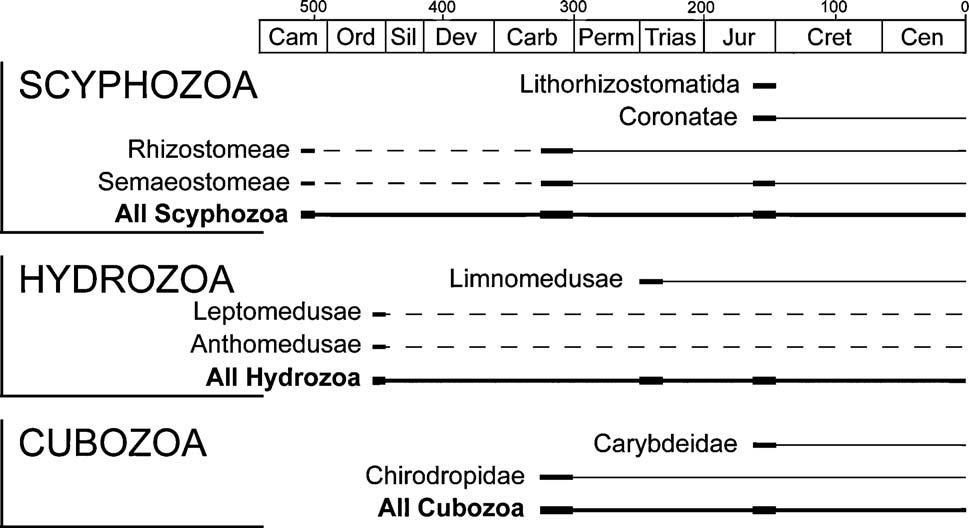
Medusae have a surprisingly long fossil record for such a flimsy organism. Whilst this might seem counter-intuitive, it is thought that the relative lack of scavengers and bioturbation in the early Paleozoic allowed for more specimens to be preserved. Later, as scavenging and bioturbation increased, it becomes harder to find jellyfish fossils. Image taken from Young and Hagadorn 2010. Stratigraphic distribution of fossil medusae. Thick lines show intervals of known occurrence and thin lines show inferred occurrence. Dashed lines denote range extensions based on occurrences that have not yet been formally published. Diagram from Young & Hagadorn 2010.
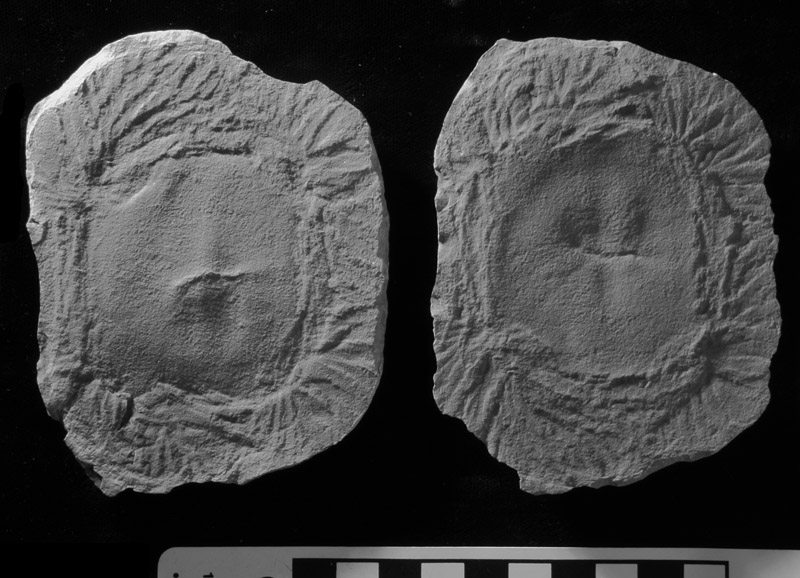
Identifying medusae in the fossil record can be problematic despite exceptional preservation. Sometimes shape alone can be diagnostic, such as the case with this Anthracomedusa turnbulli, a cubomedusan (box jellyfish), from the Late Carboniferous Mazon Creek lagerstätte, Illinois, USA. Image credit: Royal Ontario Museum, specimen ROM 53730.
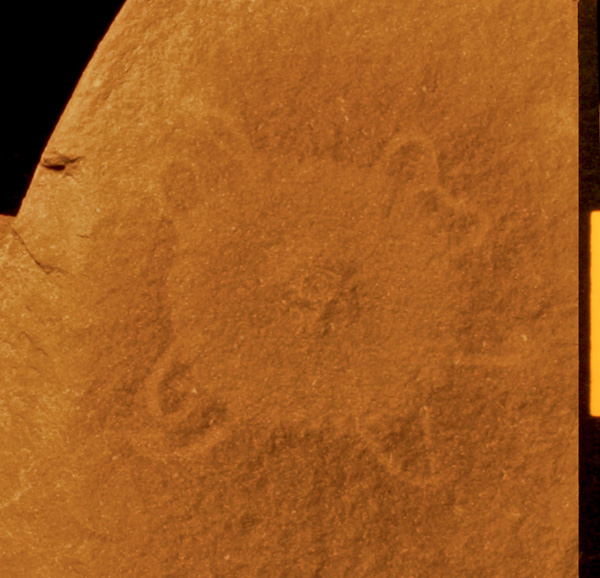
Other times, anatomical features, such as the tentacles in this Octomedusa pieckorum, can be used to determine the affinity of a fossil. Mazon Creek, Illinois, USA. Image credit: Royal Ontario Museum, specimen ROM 47540.
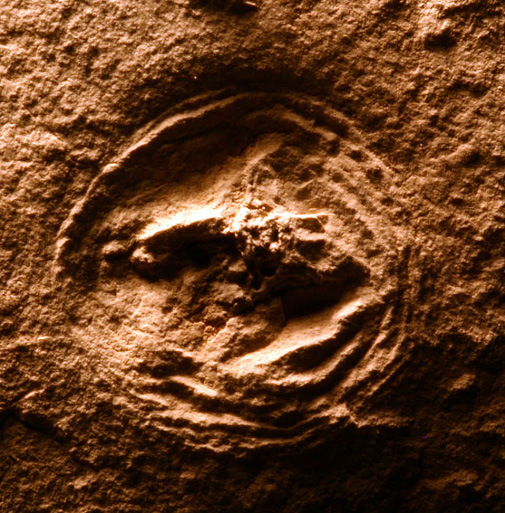
It can be hard to prove the affinity of weathered specimens, or those without immediately obvious characteristics. Ordovician hydromedusan, Manitoba, Canada. Image credit: The Manitoba Museum, specimen I-4056A.
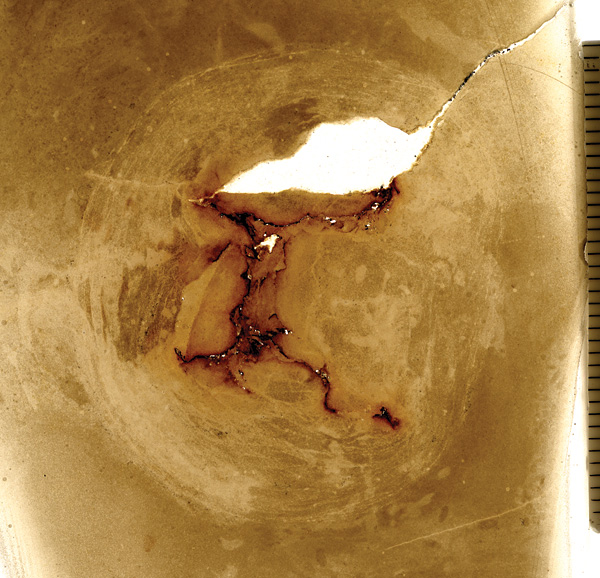
Destructive sectioning can help retrieve more information about the identity of a suspected jellyfish fossil. Section through Late Ordovician (Katian) medusa from the Williams Member, Stony Mountain Formation, at William Lake, Manitoba, Canada. This specimen displays features including dark, partly pyritized canals and a wrinkled bell (outer concentric circles), confirming it as a jellyfish specimen. Image credit: The Manitoba Museum, specimen I-4262B.
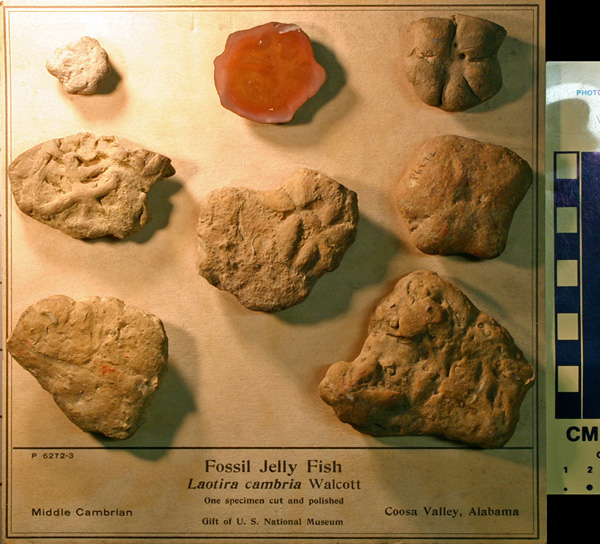
Many sedimentological structures are misidentified as fossil jellyfish. Laotira cambria from the Cambrian of Alabama (specimens from the Field Museum, Chicago) is one such example. Described by the famous Burgess-Shale palaeontologist Charles Doolittle Walcott as fossil jellyfish, they have since been re-interpreted as likely burrow structures.

